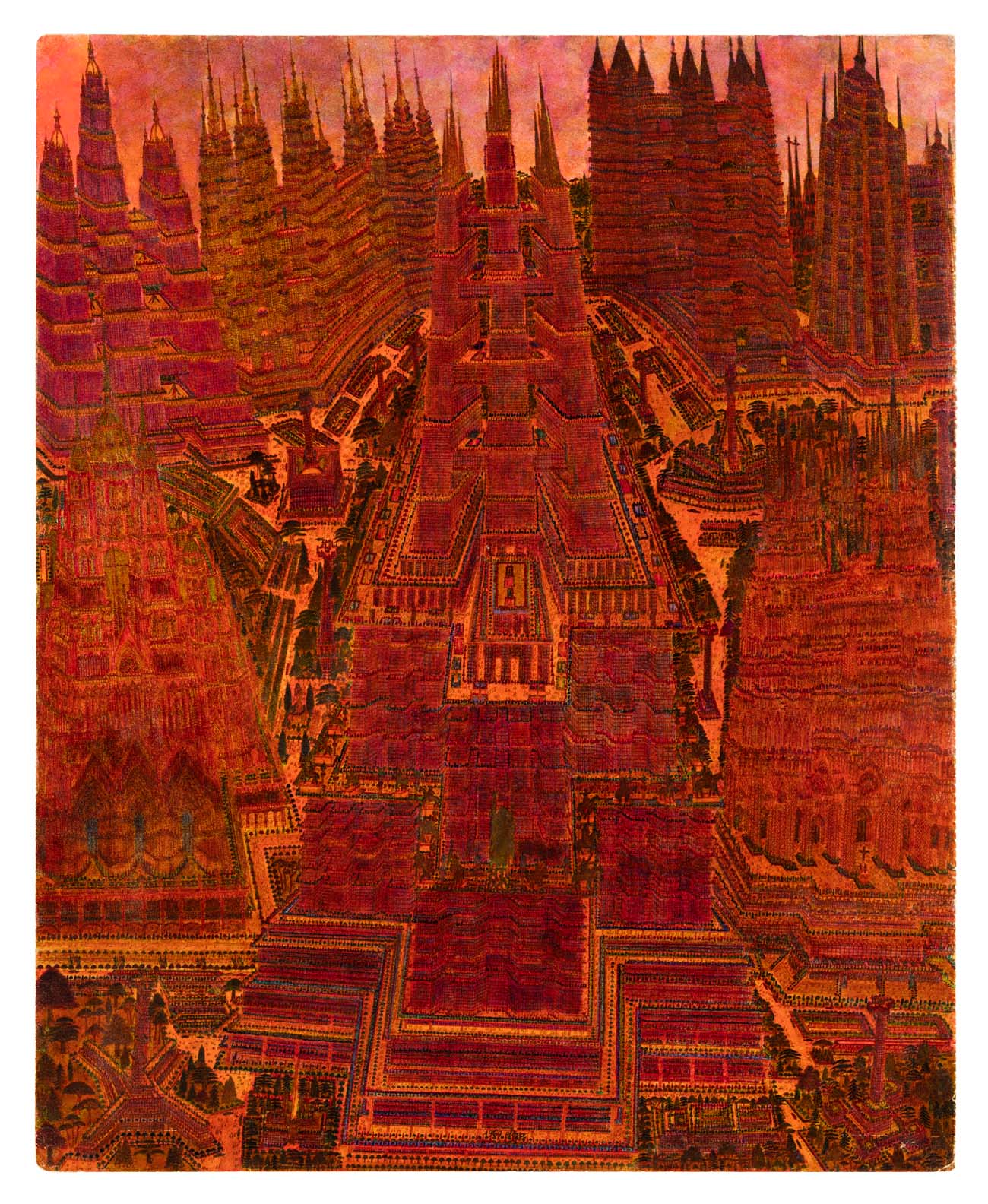Storr, Marcel
França, 1911 - 1976
One can imagine self-taught artist Marcel Storr in 1964, his head bent low over the Paris streets he was employed to sweep, as he studied the staggered patterns of the cobblestones. Back at his home in the ninth arrondissement, not far from the ornate Église de la Sainte-Trinité and the historic Notre-Dame-de-Lorette, he would dream up his own extraordinary ecclesiastical sites through a series of graphite and colored-ink drawings, roughly sixty-four in total, that he produced over the course of his lifetime. Though the significant gap in information about Storr’s life prohibits a clear understanding of his relationship to religion, his output indicates that he was searching for some kind of understanding, and perhaps to have a hand in divine creation.
In pictures dating back to the 1930s, Storr fashioned turrets and spires that complemented gothic archways framing dark voids, enhanced by the mauves and salmons of dusky, majestic skies. The grounds of his creations were landscaped with bulky bushes and trees, but the scale was always thrown off by the people he put in them—like trails of ants, perhaps added as an afterthought. Through experiments with perspective; extravagant architectural flourishes; and meticulous repetitions of stone blocks, spires, roofing tiles, and eaves, he made his formidable structures appear even more inviolable. He showed his designs to no one but his wife, and he didn’t seem to care about the practical matters of building his structures (which perhaps only Edward Gorey’s motley crew would have occupied). The drawings were about the facades, their evocations of awe, and the anticipation of finding oneself standing before something all-encompassing.
